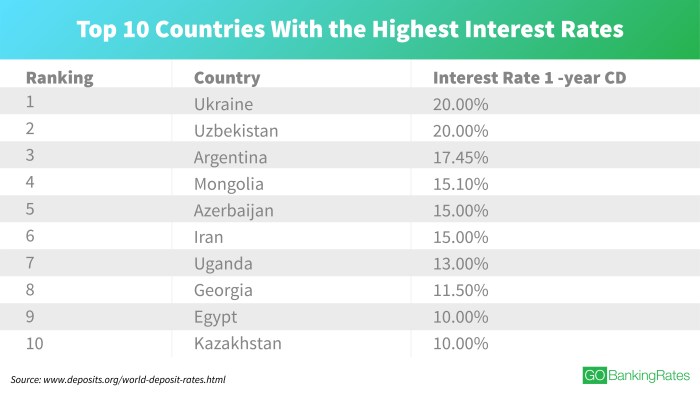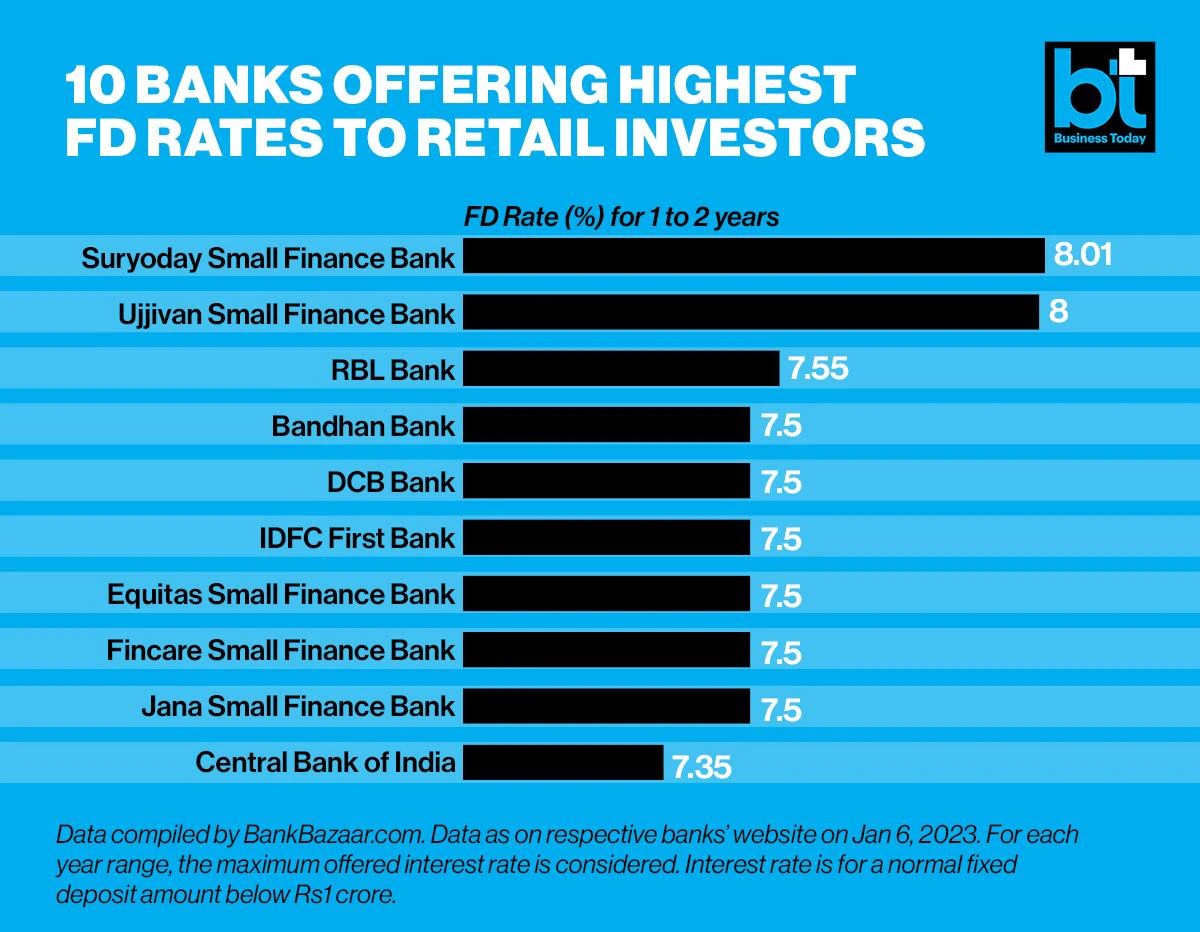Best Offshore Interest Rates offer a compelling opportunity for investors seeking higher returns, but navigating this landscape requires careful consideration. This guide unravels the complexities of offshore interest rates, exploring the factors influencing them, the various account types available, and the crucial risks involved. We’ll compare interest rates across different jurisdictions, delve into the nuances of different account structures, and provide a practical roadmap to help you make informed decisions.
Understanding the interplay between currency fluctuations, regulatory environments, and tax implications is paramount. We’ll equip you with the knowledge to compare offers effectively, negotiate favorable terms, and ultimately, find the best offshore interest rates tailored to your specific financial goals. From savings accounts to term deposits, we’ll illuminate the path to maximizing your investment potential while mitigating potential risks.
Risks and Considerations of Offshore Interest Rates

Offshore banking, while potentially offering higher interest rates, presents several inherent risks that investors must carefully consider before committing their funds. Understanding these risks and conducting thorough due diligence are crucial for mitigating potential losses and ensuring a positive investment outcome. This section Artikels key risks and considerations associated with offshore interest rates and accounts.
Currency Fluctuations
Changes in exchange rates can significantly impact the returns from offshore accounts. If the currency of the offshore account depreciates against your home currency, the interest earned might be offset or even outweighed by the currency conversion loss when you repatriate your funds. For example, if you invest in a high-yield account in a country whose currency weakens against your home currency, your overall return could be significantly lower than initially anticipated.
Careful monitoring of exchange rates and potentially hedging strategies are necessary to mitigate this risk.
Regulatory Changes
The regulatory environment governing offshore banking can be complex and prone to change. New laws, tax treaties, and international agreements can unexpectedly affect the accessibility and taxation of your offshore accounts. A sudden shift in regulations could lead to increased fees, restrictions on withdrawals, or even the freezing of assets. Staying informed about regulatory developments in the jurisdiction where your account is held is crucial for proactive risk management.
Due Diligence in Offshore Bank Selection
Choosing a reputable and stable offshore bank is paramount. Thorough due diligence is essential to avoid banks with questionable practices or those facing financial instability. This includes verifying the bank’s licensing, regulatory compliance, financial health (through reviewing financial statements and credit ratings), and history. Consider consulting with independent financial advisors specializing in offshore banking to assist in this process.
Selecting an institution with a strong track record and robust regulatory oversight minimizes the risk of fraud or loss of principal.
Tax Implications of Offshore Interest
The tax implications of earning interest in offshore accounts vary significantly depending on your country of residence and the tax treaties in place. Failing to declare offshore income can result in severe penalties, including fines and imprisonment. It is crucial to understand the tax reporting requirements in your home country and seek professional tax advice to ensure compliance with all applicable laws.
Many countries have specific reporting requirements for foreign accounts, often exceeding a certain threshold of funds or income. Ignoring these regulations could lead to significant legal and financial repercussions.
Key Factors to Consider Before Investing in Offshore Accounts
The decision to invest in offshore accounts should be based on a thorough assessment of several key factors. Ignoring these elements could lead to unforeseen complications and financial losses.
- Investment Goals: Clearly define your investment objectives. Offshore accounts may not be suitable for all investors.
- Risk Tolerance: Assess your capacity for risk, acknowledging the potential for currency fluctuations, regulatory changes, and other unforeseen circumstances.
- Fees and Charges: Compare the overall costs associated with different offshore accounts, including management fees, transaction fees, and any potential penalties.
- Account Accessibility: Consider the ease of accessing your funds and the potential restrictions or delays associated with transferring money internationally.
- Legal and Tax Compliance: Ensure you fully understand the legal and tax implications of holding offshore accounts and comply with all relevant regulations.
- Reputation and Stability of the Bank: Conduct thorough due diligence on the financial institution before depositing your funds.
Finding and Comparing Offshore Interest Rates: Best Offshore Interest Rates

Securing the best offshore interest rates requires diligent research and a thorough understanding of the financial landscape. This involves navigating various banking institutions, interpreting complex terms, and potentially negotiating favorable conditions. The following sections Artikel effective strategies for achieving these goals.
Finding competitive offshore interest rates necessitates a multi-faceted approach. It’s crucial to utilize a combination of online resources, direct contact with banks, and perhaps even the services of a financial advisor specializing in international banking. Simply relying on a single source of information could lead to missing out on potentially advantageous offers.
Methods for Researching and Comparing Offshore Interest Rates, Best Offshore Interest Rates
Several methods exist for identifying and comparing offshore interest rates. Online comparison websites specializing in international banking can provide a starting point, allowing you to quickly survey rates from different institutions. However, it is important to verify the information independently with the banks themselves, as rates can change frequently. Directly contacting banks, either via email or phone, is another effective approach, enabling you to obtain the most up-to-date information and clarify any uncertainties.
Finally, engaging a financial advisor can prove beneficial, particularly for those with complex financial situations or limited experience in international banking. They can provide personalized recommendations and assist in navigating the complexities of offshore banking.
Interpreting Terms and Conditions Related to Offshore Interest Rates
Offshore interest rates are often presented with various associated terms and conditions that can significantly impact the overall return on investment. Understanding these terms is paramount to making informed decisions. Key aspects to consider include the interest rate itself (expressed as an annual percentage rate or APR), the compounding frequency (daily, monthly, or annually), any minimum deposit requirements, and the duration of the deposit term (e.g., 3 months, 1 year, 5 years).
Furthermore, be aware of potential fees, such as account maintenance fees or early withdrawal penalties, which can reduce the net return. Always carefully review the fine print before committing to any deposit. For example, a seemingly high interest rate might be offset by significant fees or restrictive terms.
Tips for Negotiating Better Offshore Interest Rates
While not always guaranteed, negotiating a better interest rate is possible, particularly for larger deposits. Factors such as the size of your deposit, the length of the deposit term, and your overall banking relationship with the institution can influence the bank’s willingness to negotiate. Presenting yourself as a valuable client with a long-term commitment can strengthen your negotiating position.
Researching competing offers from other banks can also provide leverage during negotiations. For instance, you could inform the bank that you’ve received a better offer elsewhere, prompting them to reconsider their initial offer. Remember to maintain a professional and respectful demeanor throughout the negotiation process.
Step-by-Step Guide to Finding the Best Offshore Interest Rates
Finding the best offshore interest rates requires a systematic approach. Follow these steps to maximize your chances of success:
- Identify your needs and goals: Determine the amount you wish to deposit, the desired deposit term, and your risk tolerance.
- Research potential banks: Utilize online comparison websites and directly contact offshore banks to gather information on their interest rates and terms.
- Compare offers: Create a spreadsheet to compare rates, fees, and terms from different institutions, ensuring a clear understanding of the total return.
- Verify information: Confirm the accuracy of the information obtained from online sources by contacting the banks directly.
- Negotiate rates (if applicable): Explore the possibility of negotiating a higher interest rate, particularly for larger deposits or longer terms.
- Review terms and conditions carefully: Before making a decision, thoroughly review all associated fees and terms to avoid unexpected costs.
- Choose the best option: Select the offshore bank offering the most favorable combination of interest rate, fees, and terms based on your individual needs.
Securing the best offshore interest rates demands a proactive approach, combining thorough research with a keen understanding of the associated risks. By carefully weighing the potential returns against the inherent complexities of offshore banking, you can strategically position yourself for optimal financial growth. Remember, due diligence and a clear understanding of your investment objectives are key to making informed decisions that align with your long-term financial strategy.
This guide serves as a starting point; seeking professional financial advice is crucial before committing to any offshore investment.

